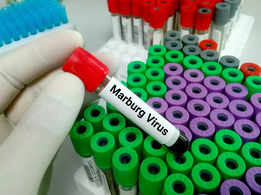01/776 samples of COVID XBB 1.16 found in India: INSACOG

As per the INSACOG, the forum that studies and monitors genome sequencing and virus variation of circulating strains of COVID-19 in India, a total of 76 samples of new COVID variant XBB 1.16 has been found in the country.
As per the official data, the samples have been found in Karnataka, Maharashtra, Puducherry, Delhi, Telangana, Gujarat, Himachal Pradesh and Odisha. The highest number of XBB 1.16 cases has been found in Karnataka and Maharashtra, the data reveals.
02/7Nine people have died from H3N2 infection nationwide


The death toll due to H3N2 infection has climbed to nine. The recent case was reported from Pune’s Pimpri-Chinchwad when a 73-year -old man succumbed to the viral infection on Friday, reports have said.
With the risk of this seasonal influenza virus on rise, state governments and governments of the union territories have issued advisory urging people to practice hygiene and take care of children and elderly people.
03/7What are the common symptoms of these viral infections?


Though two different viruses are in discussion here, the symptoms are similar to each other (maybe because both of these viruses affect the respiratory tract of a healthy individual).
The common signs that may confuse people of whether it is H3N2 or COVID are fatigue, cough, headache and sore throat.
04/7How to differentiate between the two infections?


While clinically it is difficult to differentiate between the two infections, confirmation can be established after a test.
Flu is more likely to cause high fever and myalgia or body ache.
COVID's classic signs are sore throat, cough, and congested or runny nose.
"Compared with flu, COVID-19 can cause more severe illness in some people. Compared to people with flu, people infected with COVID-19 may take longer to show symptoms and may be contagious for longer periods of time," the US CDC says.
05/7When do these infections spread?


In case of COVID, people can spread the virus 2-3 days before showing symptoms and this peaks just a day before the symptoms show. COVID infected people can also spread the disease even when they are not symptomatic.
06/7The complications people need to be careful about


Though these infections appear to be mild in nature, they can lead to serious complications in people who are vulnerable.
The common complications seen after a COVID and flu attack are pneumonia, respiratory failure, acute respiratory distress syndrome, sepsis, cardiac injury, multiple organ failure, inflammation of the heart, brain, or muscle tissues and other bacterial and fungal infections.
07/7How to prevent these viral attacks?


The best way to prevent these attacks is to limit getting exposed to the factors that help in spreading the viruses.
Avoid crowds if it is not necessary. Wear masks at public places. Keep your hands sanitized always. Do not touch your face, nose and mouth with unwashed hands. Avoid touching exposed surfaces. Keep physical distance from those who show the symptoms. If you are having the symptoms of flu or COVID avoid going out. If there are kids or older people in your house stay away from them if they are infected.
The use and abuse of nutritional supplements (the right way to do it)































































































closecomments
SIGN IN WITH
FacebookGoogleEmail